The ever-bustling Eternal City of Italy, Rome, is a treasure trove of culture, history, cuisine, and architecture. With its timeless charm, spectacular (and very significant!) monuments, and fun activities, it’s no wonder it attracts millions of visitors every year.
And don’t get me wrong – the famous tourist attractions are definitely worth the visit! But what if you were to add some unusual locations to your Rome itinerary?
Get a glimpse into the city’s forgotten stories, hidden corners as you check out the secret spots in Rome. From breathtaking viewpoints to quirky neighborhoods and lavish courtyards, you’ll discover a whole different side of the city. And chances are that none of the other tourists will be there!
➥ While I was born and raised in Bologna, an Italian city north of Rome, I’ve visited the capital city numerous times. So you can almost consider me a local, sharing with you the most underrated, incredible attractions in town.
Table of Contents
Domus Aurea
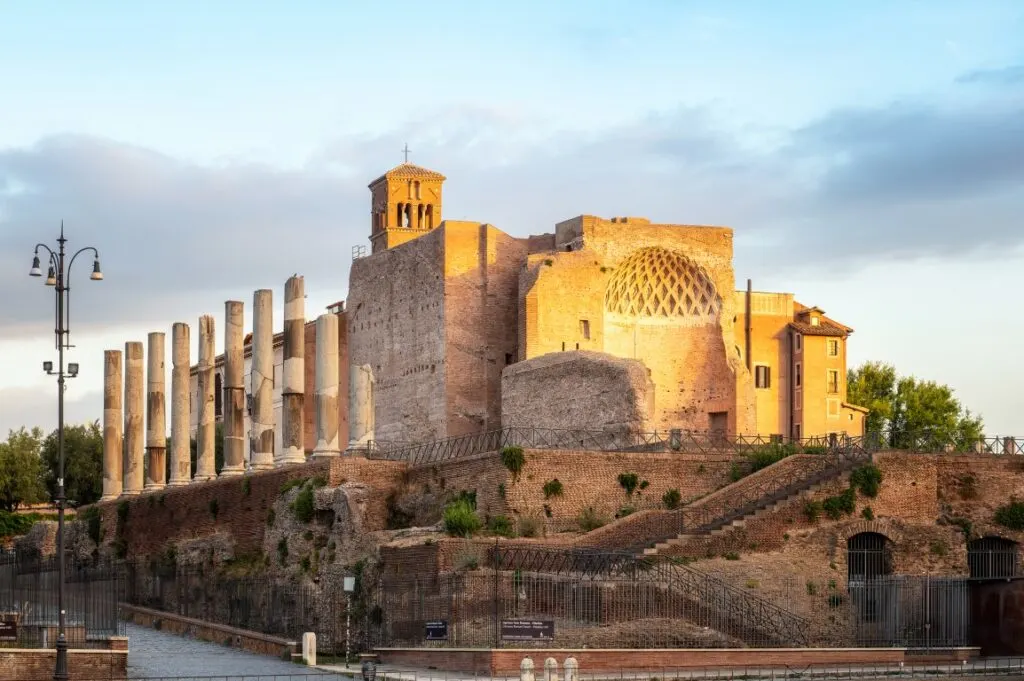
A vast palace complex during its heyday, Domus Aurea was the opulent Golden House of Emperor Nero, built halfway through the first century AD.
The sumptuous home, consisting of various buildings, was lavishly decorated with frescoes, precious stones, and gold-leafed ceilings. The structures dotted the Oppian Hill, with lakes, vineyards, and lush gardens in between.
Not long after the Emperor’s death, the Domus Aurea was buried and lost underground until the 15th century, when it was accidentally rediscovered by a boy.
Nowadays, the Domus Aurea stands as a testament to its past. And while it retains none of the indoor opulence, the structures are still impressive to see.
You’ll probably feel as if you’ve traveled back in time exploring the impressive banquet halls and long corridors, and admiring the pieces of art that cling to the chipped walls.
How To Get There: The Domus Aurea is within the Colle Oppio Park, and the entrance is on Viale Serapide. The closest metro stop is Colosseo on line B. You can also take tram 3 and get off at Piazza del Colosseo.
Opening Hours: Friday, Saturday, and Sunday from 9.15 AM to 5 PM. Visits are scheduled every 15 minutes. The attraction is closed on the first Sunday of the month.
Entrance Cost: €18 for the entry, and €26 for the entrance with a guided tour and VR. You can book the guided tour online for exclusive access to the site.
Galleria Sciarra
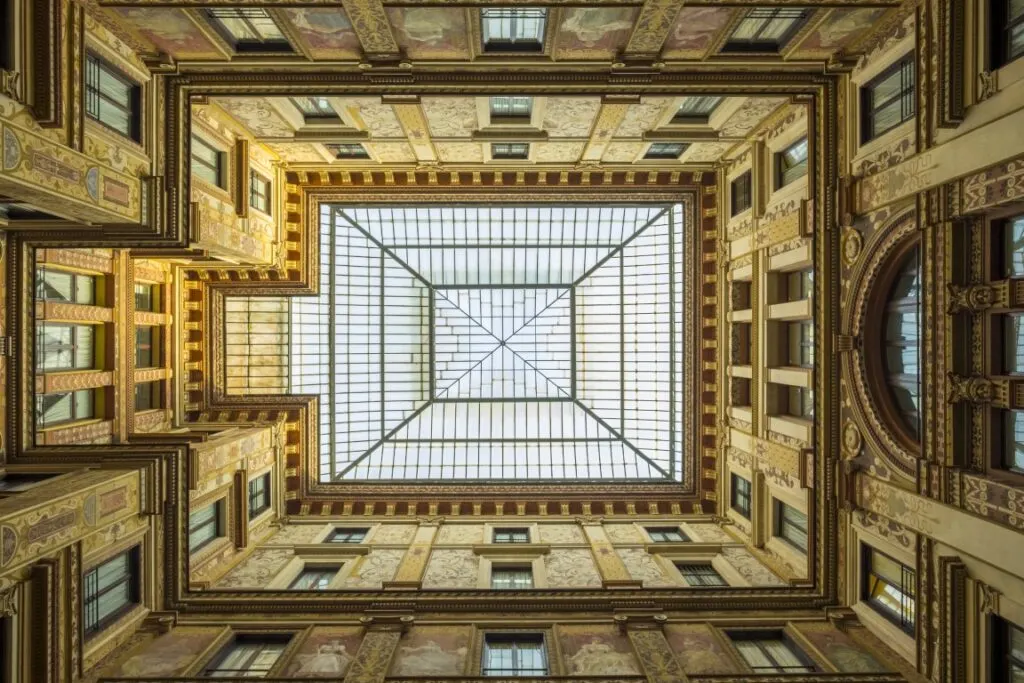
Right in the heart of the city lies Galleria Sciarra, an off the beaten path Art Nouveau treasure. This 19th-century courtyard is located mere steps from the famous Trevi Fountain and yet is mostly unknown, so people simply walk past it.
The jaw-dropping Galleria Sciarra was built for the influential Sciarra family, originally meant to be a shopping mall. It features intricate and very colorful frescoes that completely cover every inch of the walls, which are four stories high.
The frescoes depict women in different stages of life, floral designs, and family themes.
An impressive glass and iron skylight allows the sunlight to flood the courtyard, highlighting the details of the paintings. Photo tip: photograph the ceiling from below!
How To Get There: Make your way to the Trevi Fountain, the most recognizable landmark near Galleria Sciarra. From there, you’ll walk along Via delle Muratte street, and take a left on the corner with Via Santa Maria. You’ll already be able to see the courtyard from there.
Opening Hours: The Galleria opens Monday to Friday from 9 AM to 8 PM.
Entrance Cost: Free.
Aventine Keyhole
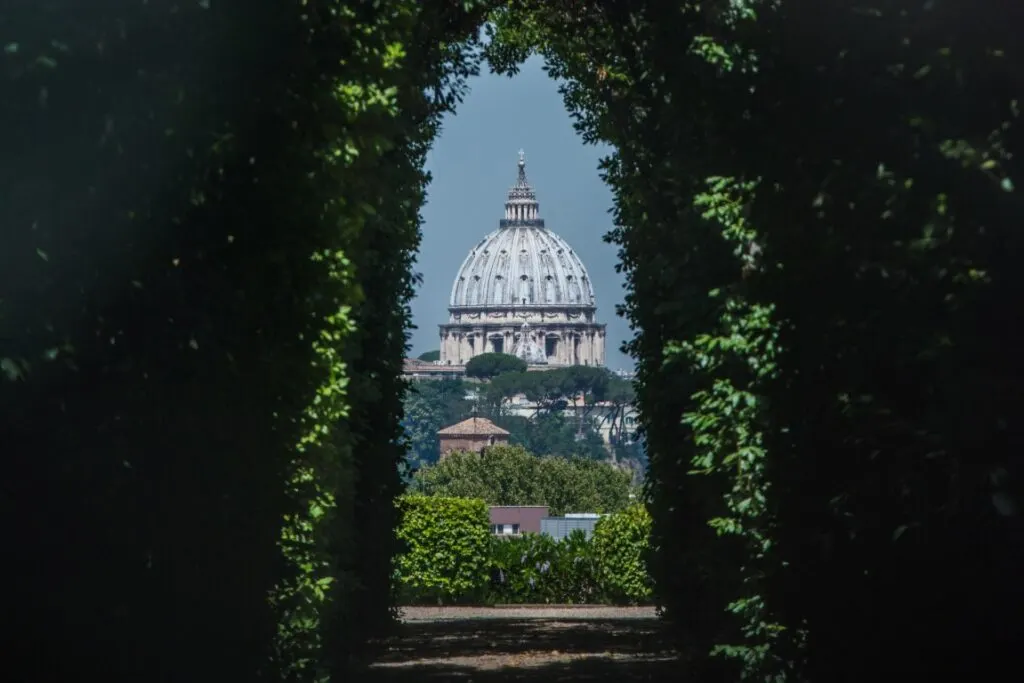
Located on the enchanting Aventine Hill, the Aventine Keyhole offers one of the most glorious yet secret views of Rome. And that’s because it’s not very easy to find if you don’t know what you’re looking for!
This hidden gem is found on the unassuming door belonging to the Priory of the Knights of Malta. This rather small keyhole grants you privileged views of St. Peter’s Dome framed by the garden. It aligns so perfectly with the building that it makes one wonder if the door was positioned there on purpose.
While it’s a rather unknown treasure, Aventine Hill is not exactly off the beaten track, so you might find a small crowd at the door, curious to take a peek.
How To Get There: The closest metro stop is Circo Massimo, taking line B. It’s a short walk to Aventine Hill, and there you’ll head to Piazza dei Cavalieri di Malta 3, where the door is located.
Opening Hours: 24 hours.
Entrance Cost: The Aventine Keyhole is free to visit.
Centrale Montemartini
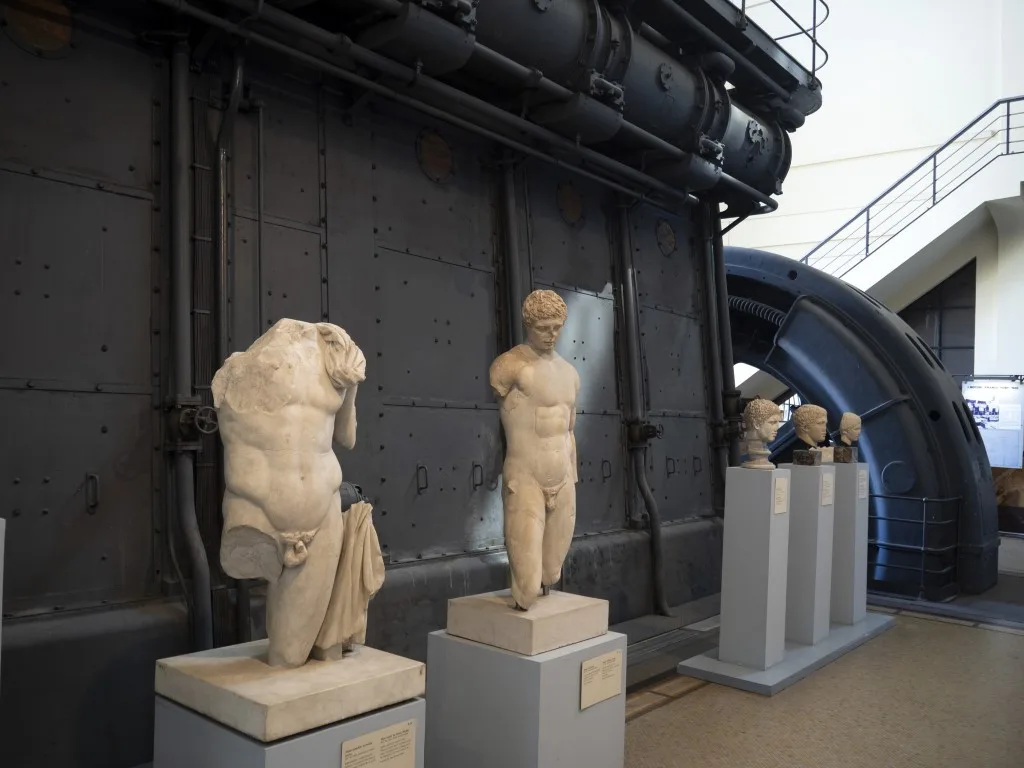
Centrale Montemartini is a unique museum housed in a former power plant, which juxtaposes industrial architecture and classical art. This surreal combination of history and modernity creates an incredible visual experience!
The museum showcases art and sculptures from the Roman Era, including mosaics and marble statues of gods and emperors.
Centrale Montemartini is part of the Capitoline Museums, considered among the oldest in the world. But it’s the dramatic backdrop of engines and turbines to the exquisite art pieces that makes it an unmissable stop in Rome.
The museum is often overlooked by visitors, and vastly unknown, making it an authentic hidden treasure.
How To Get There: If you’re getting there by metro, take line B to Garbatella station, which is a short 10-minute walking distance to the museum. You can otherwise take a local train to Ostiense station.
Opening Hours: Tuesday to Sunday from 9 AM to 7 PM.
Entrance Cost: €11.50 at the ticket office. You can also get tickets to the Capitoline Museums, which include an audioguide and entrance to the Centrale Montemartini.
Basilica di San Clemente
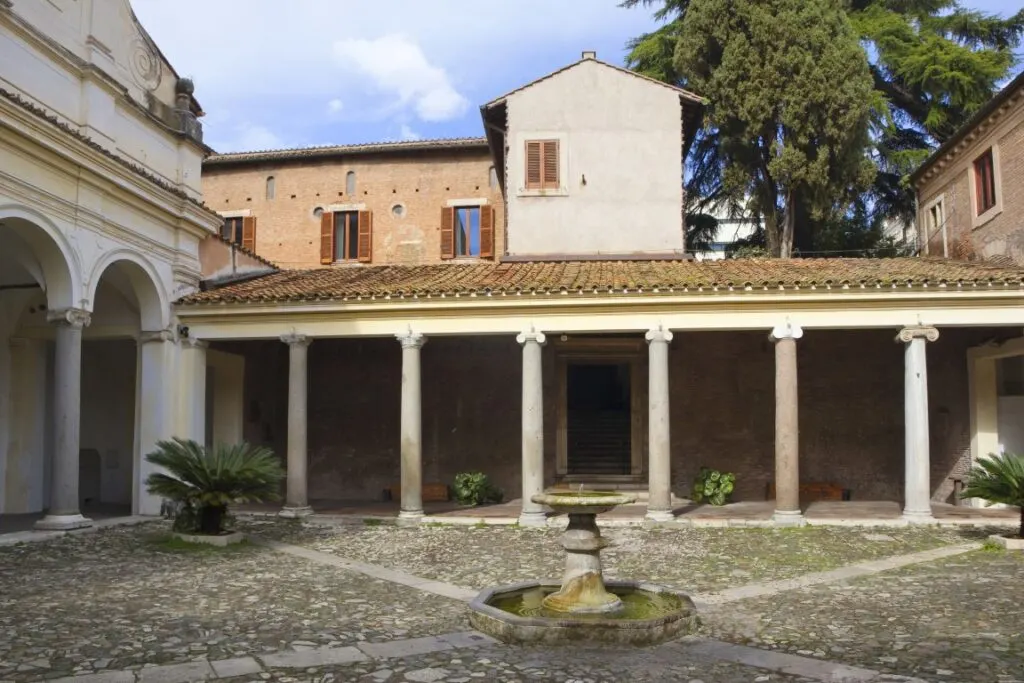
A magnificent Roman landmark that couldn’t be missing from this list is Basilica di San Clemente. This 12th-century church features a three-tiered complex, each of which represents an era of Roman history.
The basilica is adorned with ornate mosaics, frescoes, and marble inlays, showcasing astounding medieval artistry. But that’s not all this location is known for, as its historical significance is off the charts.
Below the basilica there’s a 4th-century church with early Christian art, and further below are the remains of a Roman house from the 1st century. With each level, you’ll be diving deeper into Rome’s history, so it’s an iconic place to visit.
How To Get There: The Basilica is located in Piazza San Clemente, merely a five-minute walk from the Colosseum. The Colosseo Metro Station is 8 minutes away, and you’ll reach it with Line B. You can also take Tram 3 and 8 to Labicana Transit Stop, 2 minutes away.
Opening Hours: Monday to Saturday from 9 AM to 12.30 PM, and from 2 PM to 5.30 PM. Sundays from 12 PM to 5.30 PM.
Entrance Cost: Entrance to the Basilica is free. Access to the excavations, however, costs €10 for people 16 and older.
Quartiere Coppedè
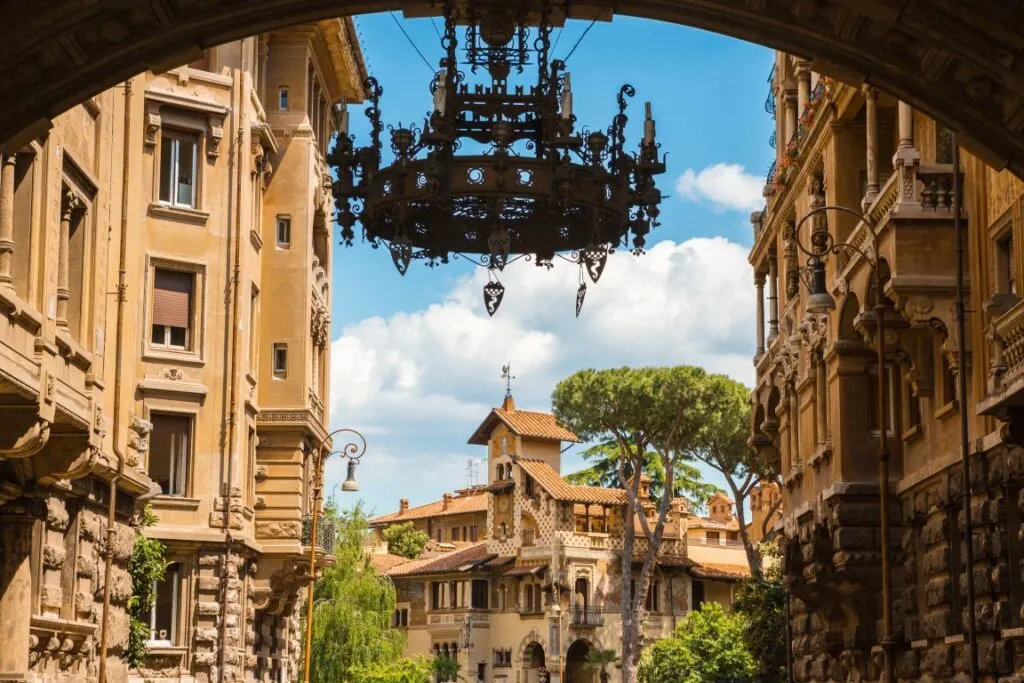
Quartiere Coppedè is an eclectic area of the city named after the architect who created it, Gino Coppedè. Blending Gothic, Baroque, Art Nouveau, and medieval architectural styles, the quartiere offers an interesting mix that’s guaranteed to make your jaw drop.
The quirky, eccentric buildings are works of art on their own, but combined they deliver the ultimate setting of a fairytale world.
Mythical creatures, ornate balconies, sculptures, and mosaics adorn the facades, and you’ll be visually assaulted (in the best way!) at literally every turn.
Some of the most striking landmarks to check out are Palazzo del Ragno (Spider Palace) and Villino delle Fate, which will transport you to your favorite children’s book.
Yet as magnificent as it is, Quartiere Coppedè is overlooked by tourists, so you’ll get this peculiar side of town (mostly) all to yourself!
How To Get There: The quartiere is just outside the historical center of Rome. You can get there with tram 3 or 19, getting off at Piazza Buenos Aires. There are also stops on Viale Liegi, Via Po, and Via Tagliamento. They’re all a short walking distance from the area.
You can also take buses 63, 86, 92 and 630. Just tell the driver where you want to go, and they’ll let you know where to get off.
Villa Torlonia and Casina delle Civette
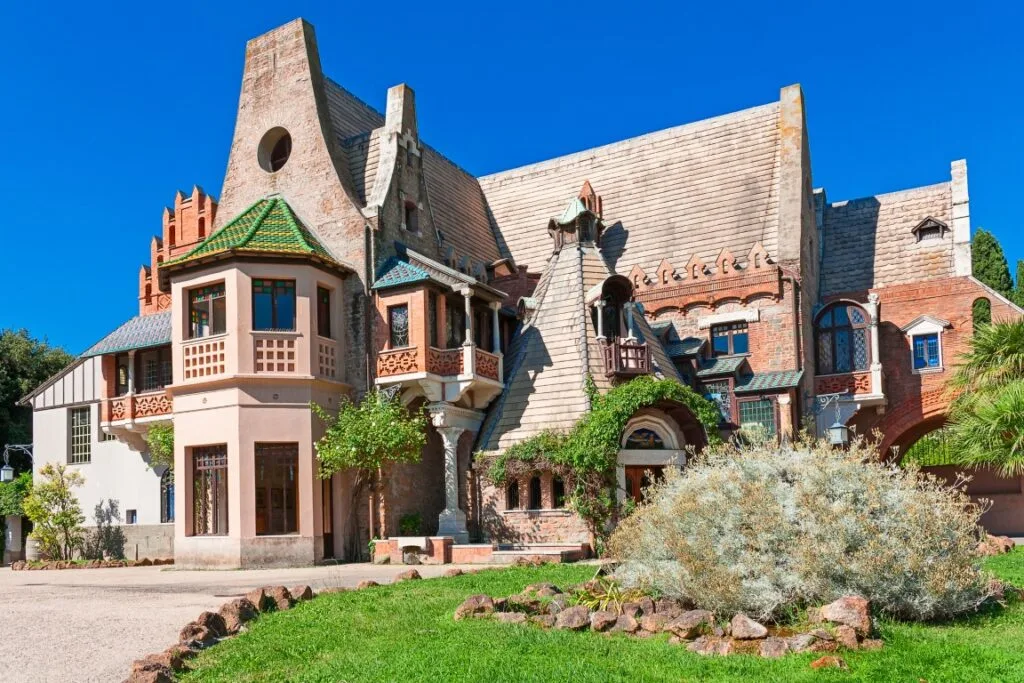
Since we’re going over the architectural marvels of Rome, we can’t forget Villa Torlonia, former residence of the noble Torlonia family. It also played a part in history, as it was rented by Mussolini as his personal home for almost two decades.
The sprawling estate features landscaped gardens, pavilions, magnificent architecture, and striking buildings. Among them, Casina delle Civette, the House of the Owls, stands out.
The house is secluded behind a hillock within the estate grounds. Originally built as a Swiss hut, it was then turned into an Art Nouveau masterpiece. It’s a whimsical construction with an irresistible storybook charm, and it’s decorated with nature-inspired motifs.
Villa Torlonia’s main house, Casino Nobile, is also a fabulous attraction with lavish interiors and frescoed walls.
How To Get There: The main entrance is on Via Nomentana, 70. The closest metro station is Metro Bologna, served by Line B. It’s a 10-minute walk from the attraction. You can also get there with buses 60, 62 and 82, or using the tram 19 and 3, which stop merely 5 minutes away.
Opening Hours: Tuesday to Sunday from 9 AM to 7 PM. Last entrance is one hour before closing time.
Entrance Cost: A single ticket with exhibition for Casina delle Civette is €9. The same price applies to a single ticket to Casino Nobile.
You can opt to visit Villa Torlonia together with Quartiere Coppedè on an Art Nouveau Private Tour, getting to know the movement and buildings more in-depth.
Protestant Cemetery (Cimitero Acattolico)
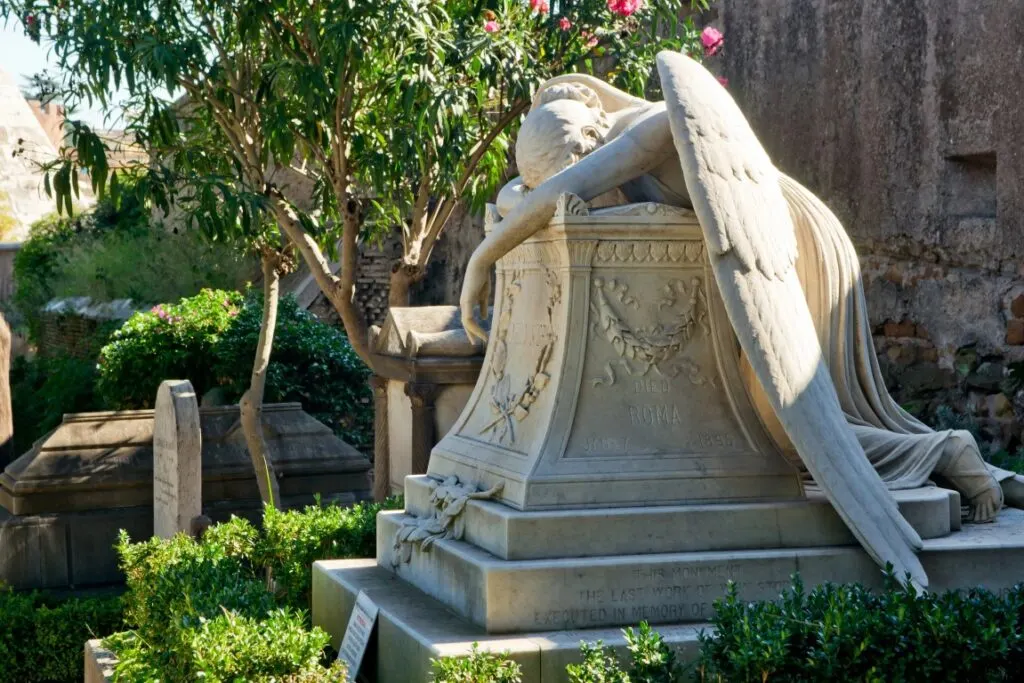
Cimitero Acattolico literally translates into Non-Catholic Cemetery, although it’s better known as the Protestant Cemetery. It’s one of the oldest burial grounds in the country, continuously operating since the 1700s.
The Roman cemetery, however, is mainly recognized for being the resting place of many notorious people, starting with the 18th-century English poets Percy Shelley and John Keats.
Philosophers, painters, sculptors, diplomats, and architects of renown are also buried there. And despite its name, the cemetery houses the graves of people from all religions, including Orthodox Christians, Jews, and Muslims.
This unconventional place might not strike you as an appealing Roman attraction, granted. But more than a cemetery, the location is a historical and beautiful landmark, towered by cypress trees, boasting lush gardens and vegetation, and complete with elaborate monuments and ornate graves.
How To Get There: The closest metro station is Piramide Station, which you’ll reach with Line B.
Opening Hours: Daily from 9 AM to 4.30 PM.
Entrance Cost: €3.
